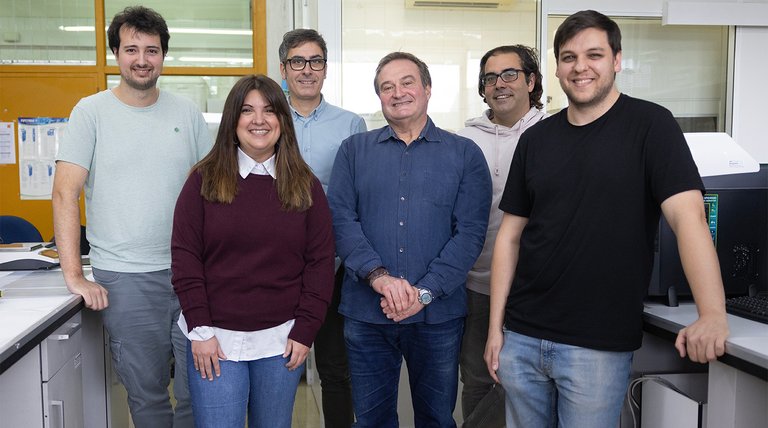Rodents in the early stages of Alzheimer's show that a drug restores brain damage

Researchers from the Neurochemistry and Neurodegeneration group of the UPV/EHU have found that a drug regenerated cognitive damage and protected the brain in rodents in the early stages of Alzheimer's disease. The drug WIN55.212-2 activates the cannabinoid neurotransmission system, which protects the brain, which, by increasing the synthesis of the neurotransmitter acetylcholine, stimulates cholinergic neurotransmission, which controls memory and learning.
In analyses conducted over the years with samples of acquired brain tissue in autopsies of patients with Alzheimer's, researchers have observed that when the first clinical symptoms of Alzheimer's, one of the transmission systems between neurons, the cholinergic system (which controls memory and learning and uses acetylcholine as a neurotransmitter), is affected, while another neurotransmission system, the cannabinoid system, is increasing. It has also been observed that the cannabinoid system is damaged as the disease progresses.
Having tested the effect with the drug WIN55.212-2, which interacts with cannabinoid receptors in rodents in the early stages of the disease, the team has found that these rodents acted like those without brain damage, in the same way they learned and remembered spatial orientation. According to the researchers, it could be said that the drug had restored the damage to some extent, or that it had protected the brain.
An innovative technique
Researchers have used a novel technique developed by the research team of the UPV/EHU that allows the anatomical identification and localization of cerebral lipids. This technique has shown that, following treatment, the activity of the cannabinoid system and cholinergic receptors of affected neurons increases, as well as the synthesis of some precursor lipids of the neurotransmitter acetylcholine. Thus, the drug restored the cholinergic system of rodents and improved memory.
According to the researchers, this molecule could become a drug to treat the symptoms of dementia, at least in the early stages of the disease, as they have seen that the body is also trying, physiologically, to do something similar. They believe that these pharmacological treatments can contribute to the promotion of this effect.
Looking for similar molecules to go into clinical trials
Although the results of the tests performed in rodents have been very encouraging, and although the next step should be to analyze their toxicity and perform clinical analyses with humans, the research team has found an obstacle: the molecule is for free use, that is, it is a synthesis molecule widely used in experimentation. It is not a molecule that can be exploited by a particular pharmaceutical company.
Toxicological studies and clinical trials require strong investment by the pharmaceutical sector, but commercial exploitation in the future is not possible. For this reason, molecules such as WIN55.212-2 are being searched and synthesized, which may be of interest to the pharmacological industry, to open the way to the clinical study of this new therapeutic pathway. To this end, they collaborate with CIC bioGUNE and the University of Vigo.
The research has been published in the British Journal of Pharmacology. This is the result of the doctoral thesis of researcher Marta Moreno Rodríguez. The director was Rafael Rodríguez Puertas, head of the research team of Neurochemistry and Neurodegeneration. Today, Marta Moreno works at the Barrow Neurological Institute in Arizona (USA).
Buletina
Bidali zure helbide elektronikoa eta jaso asteroko buletina zure sarrera-ontzian










